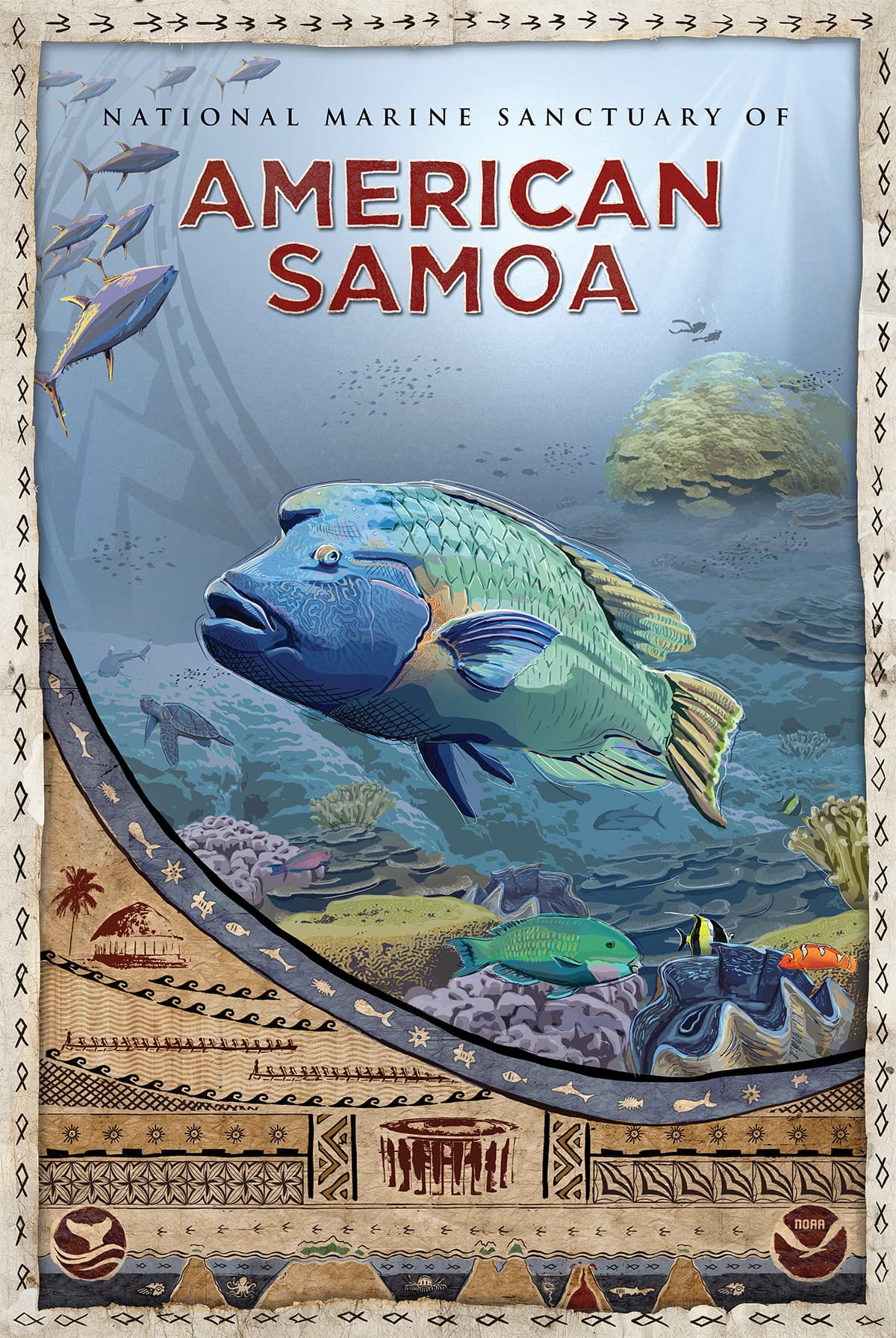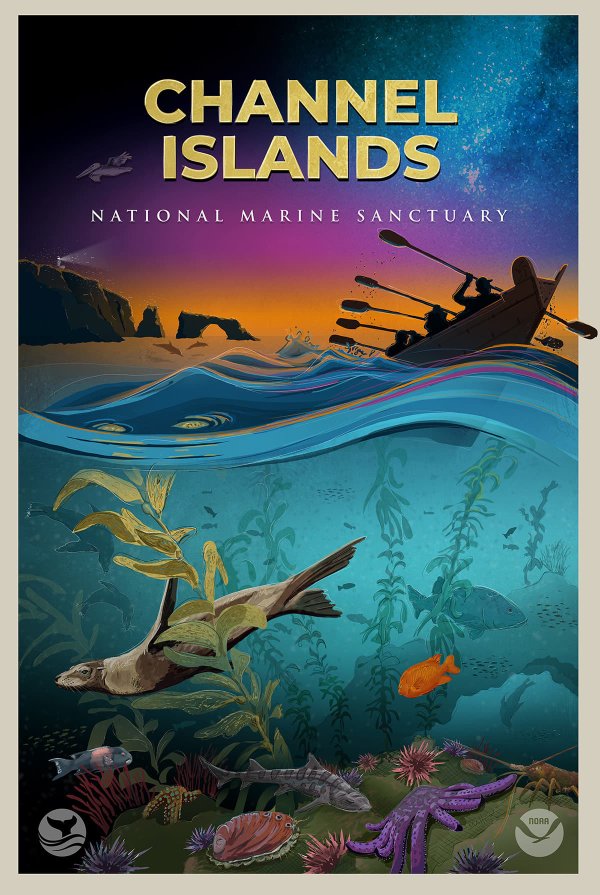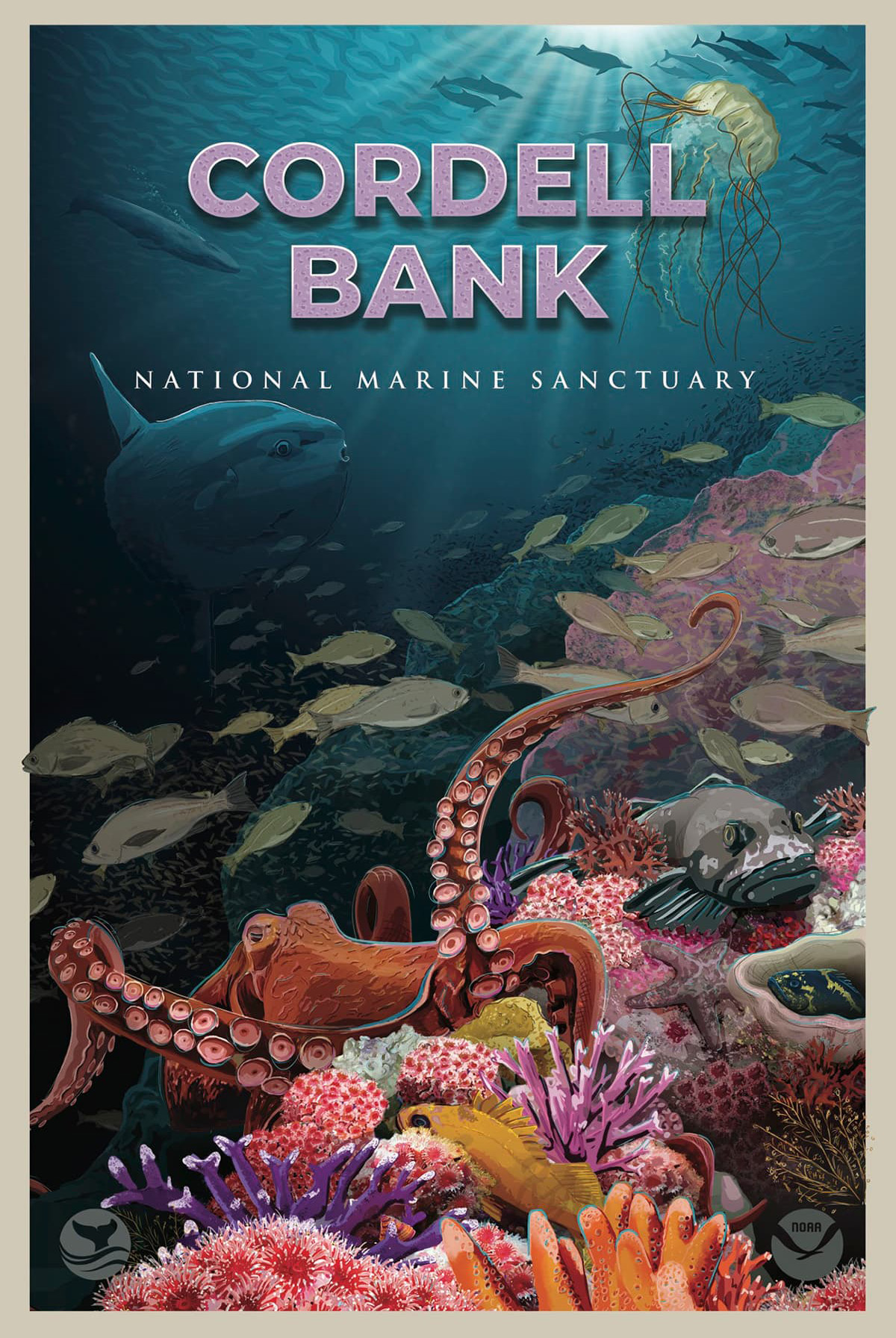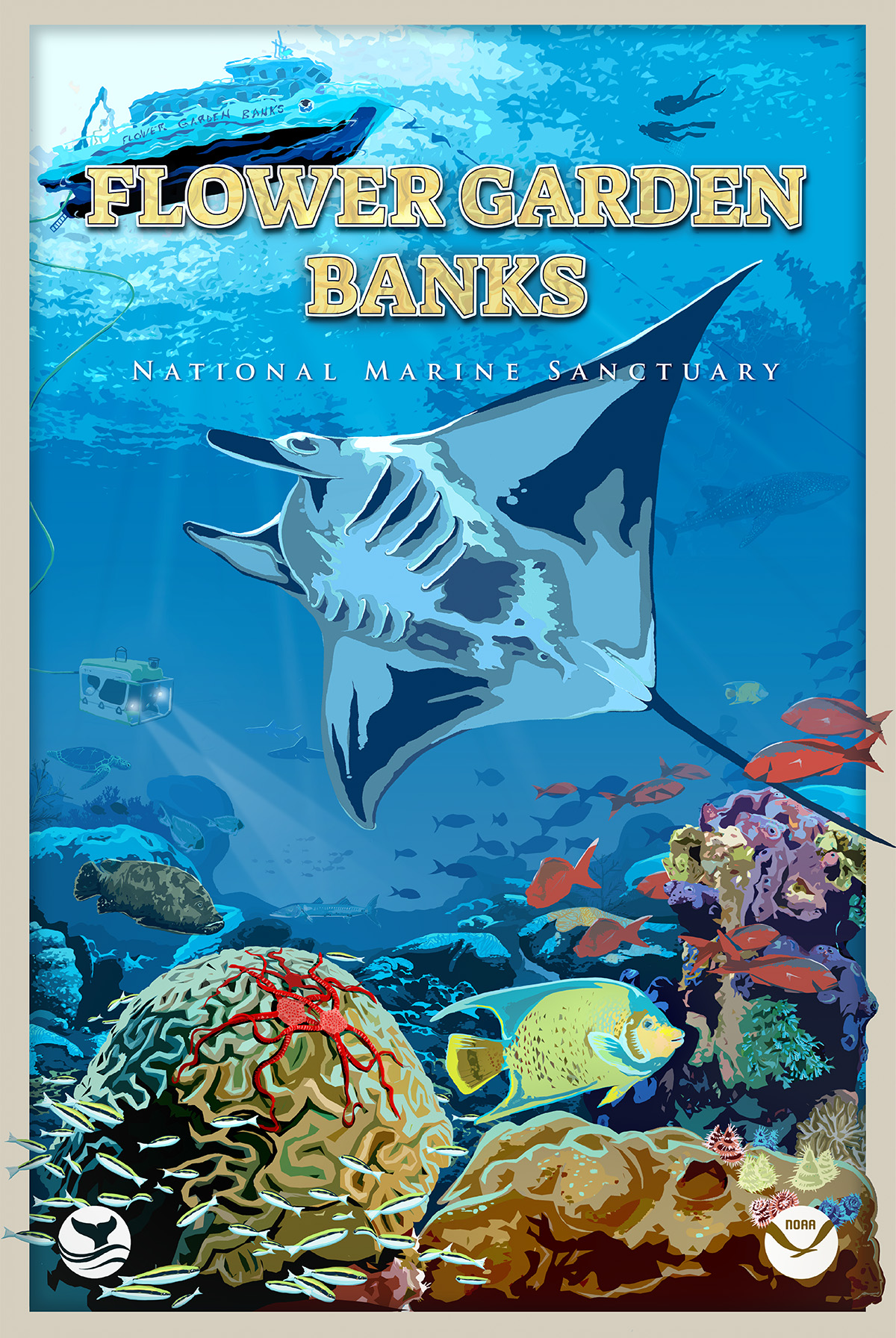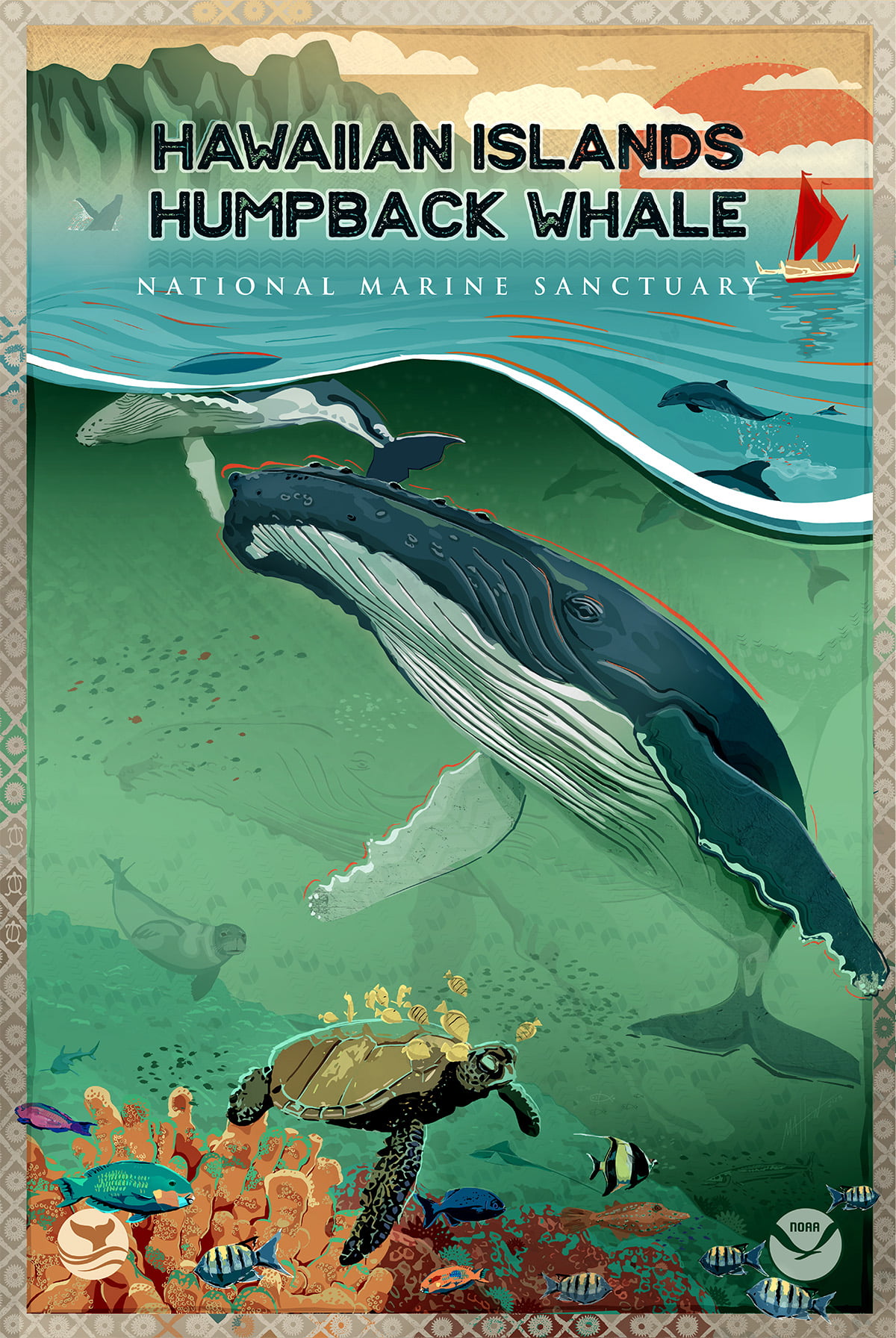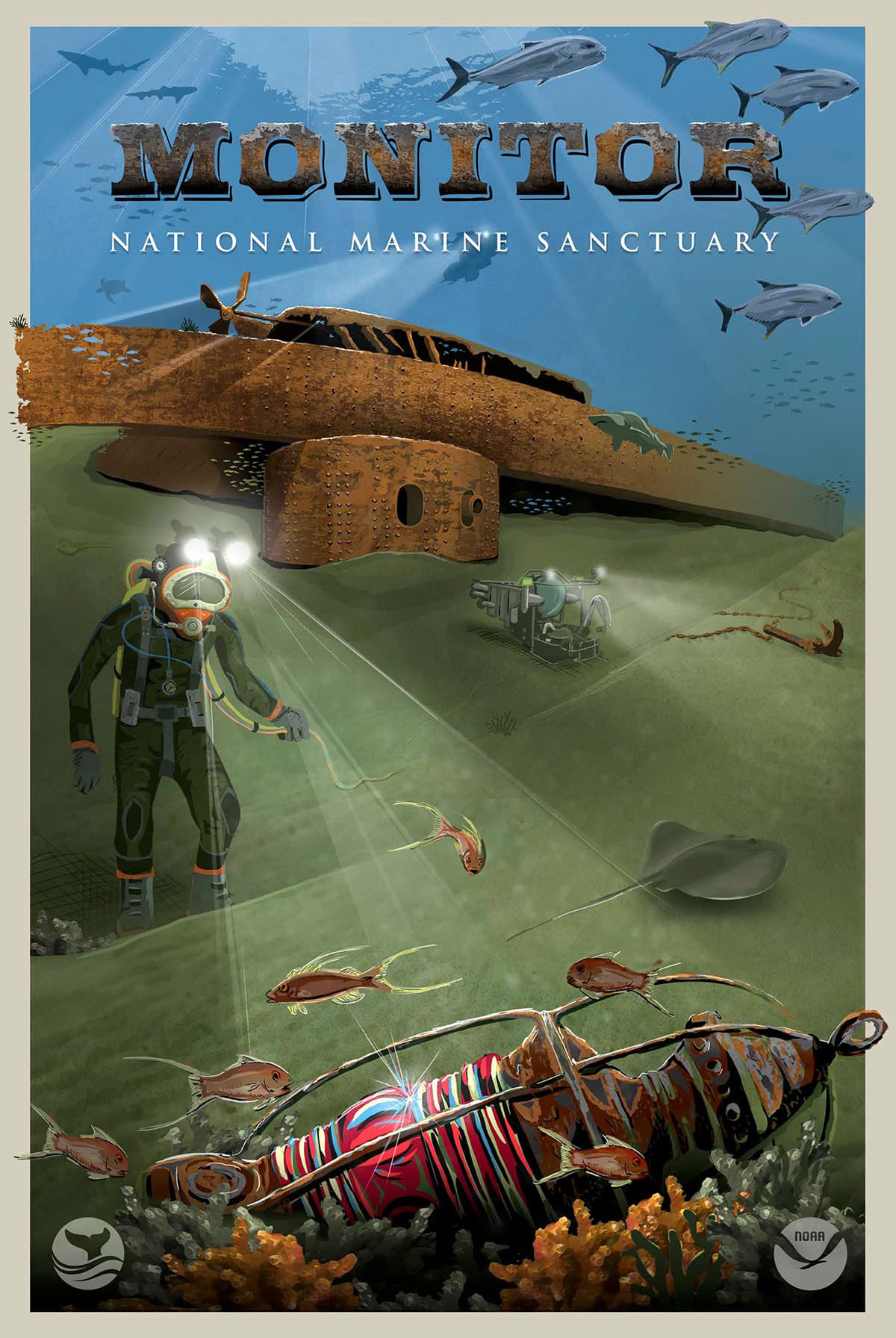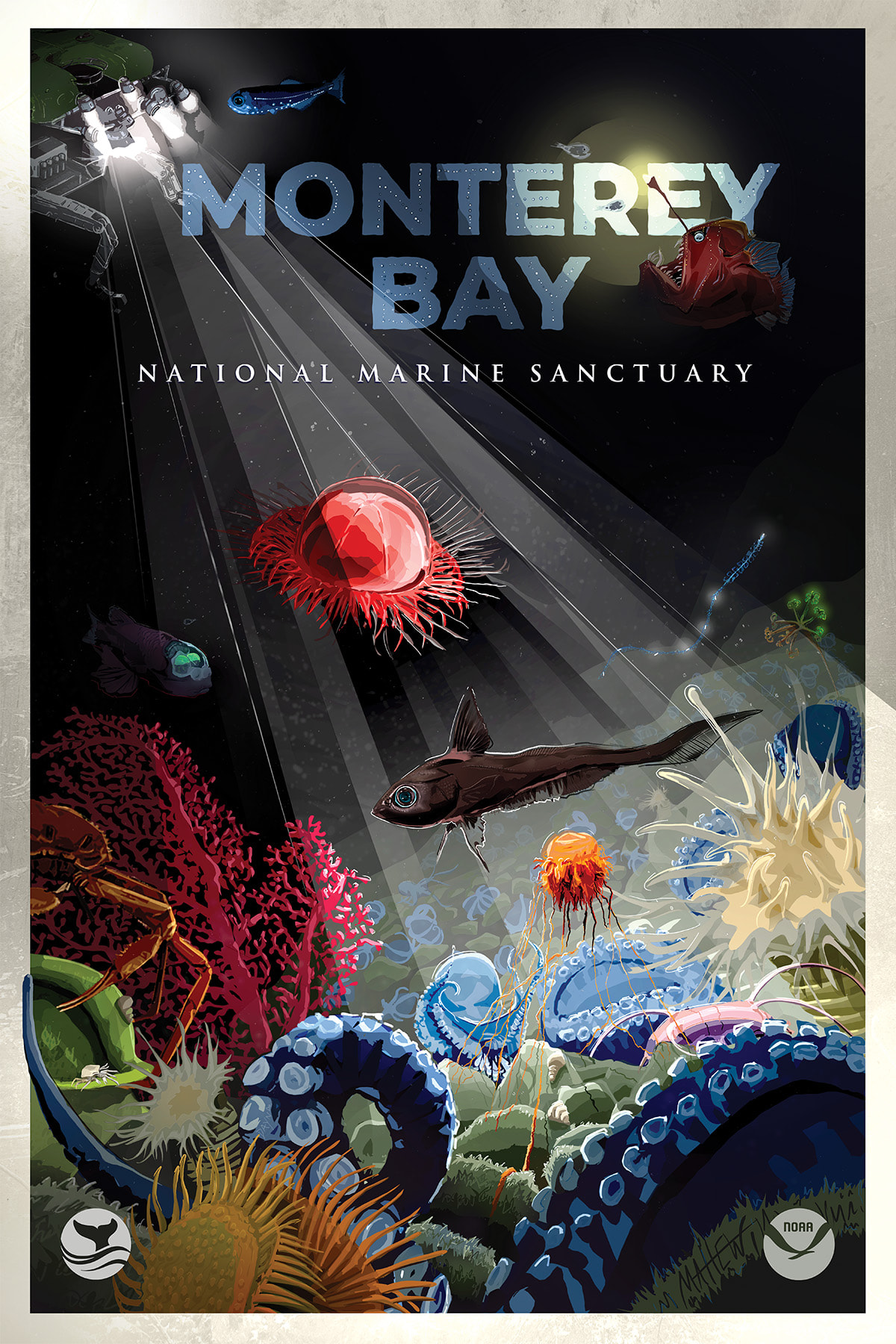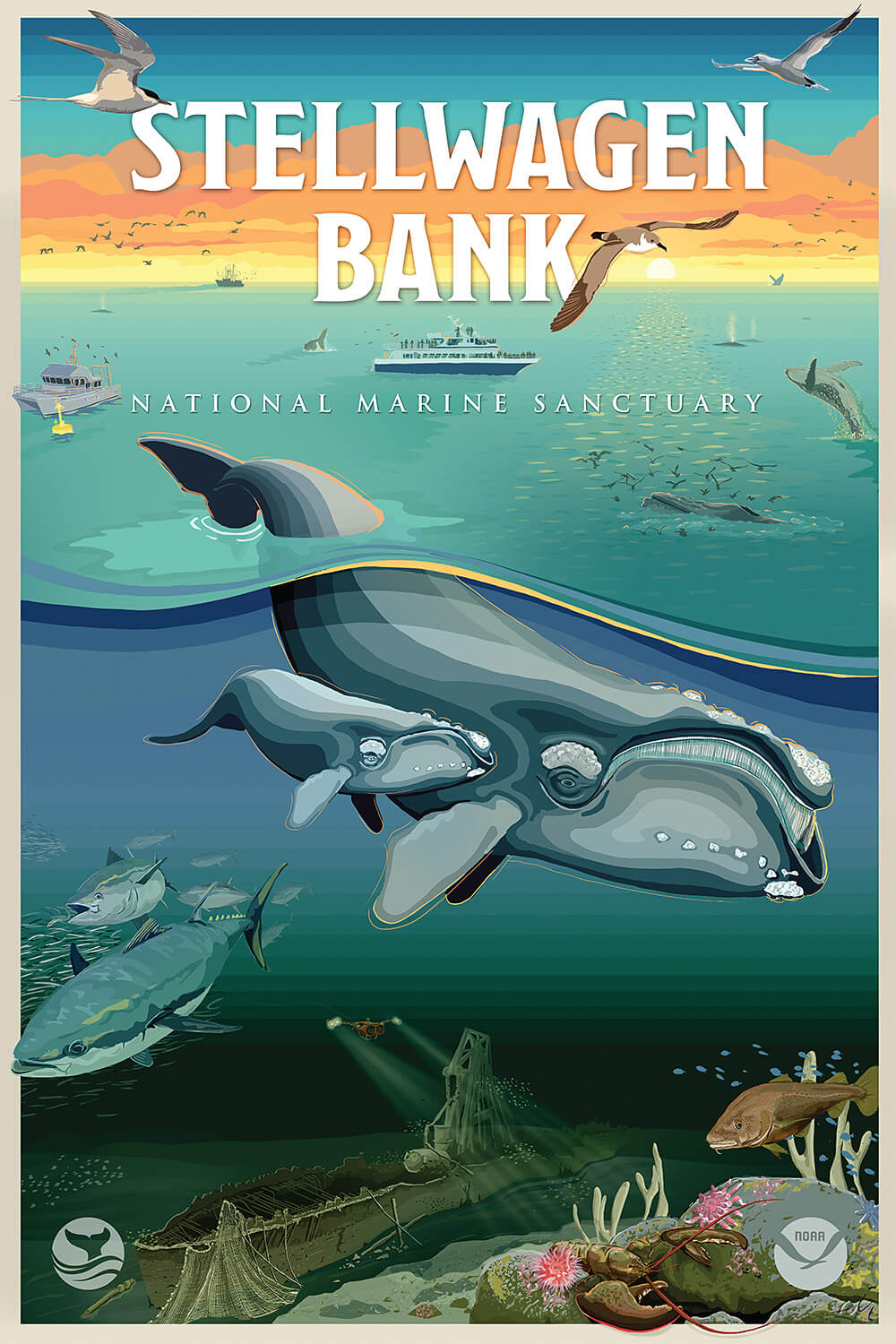National Marine Sanctuary System Posters
During the National Marine Sanctuary System's 50th anniversary celebration in 2022, a commemorative poster series was launched to capture the beauty and diversity of each site in the system. The posters are two sided, featuring original artwork on the front and educational information on the back. Other posters created for the system over the years have also been added. Dive in and download your sanctuary posters today!


